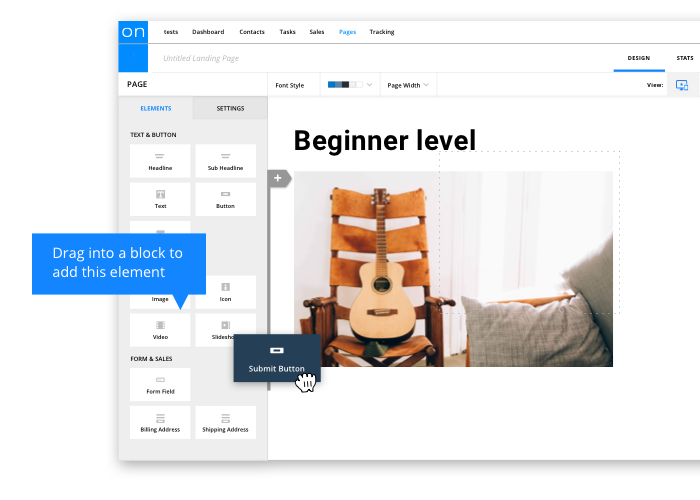By 2015, Lynda.com scaled to accommodate over 3,500 online courses — many of which featured video tutorials. The online tutorial giant has since been sold to LinkedIn for $1.5 billion, proving the effectiveness of the paid membership site model as a platform for online education.
Though Lynda.com has set the bar high, you don’t need to be anywhere near that upper echelon to profit spectacularly from an automated passive income stream through a gated membership site.
A membership site is a website people join to gain access to exclusive “members only” content, features, benefits or community. Protected by a username and password, membership sites allow you, the business owner and content creator, to share or sell your digital content and wares in one place.
Who can benefit from a membership site?
Business consultants, financial advisors, career coaches, music instructors and other professional service-based businesses can transform from one-to-one client services to one-to-many via a membership site. As experts in their particular field, professional service providers can share information through instructional videos, evergreen tutorials, a series of live webinars, podcasts and any other medium. They can also bring together an online community of people with the same interests to connect via forum discussions or online symposiums.
With the right in-demand content, these sites can offer tremendous value to their target audiences thereby making them well worth signing up and/or paying for — and that’s the key to a great membership site. They must offer something of unique, extreme value that cannot be found elsewhere — and they must maintain that exclusivity on an ongoing basis and provide members with utmost care and attention.
“We put our members first and think in every decision we make — how can we make it a better product?” said Lynda Weinman. “We know our brand really rests on our reputation. And, we’ve protected that and made a good judgement in knowing what to teach and how to teach it to make our membership more valuable than its cost.”
Before investing the time, energy and money to produce a highly valued membership site, it’ll be worthwhile to spend some time researching your market to ensure that once you launch your site, you’re not playing to an empty house; the demand has to be there. From there you’ll be able to tailor your offer and get into the nitty gritty of content creation, organization and delivery.
Determine the Demand Through Research
If you’re contemplating starting a membership site, it’s likely that you’re an expert in your niche or have something unique to offer. If you’ve got people knocking down your door asking for your services, you’re probably on to something, and a membership site could be profitable for you. However, in many cases, it’s unclear whether there’s high enough demand for the knowledge or information you’re seeking to share. Or perhaps the interest is there, but it’s unknown whether your audience would value it enough to subscribe to a membership site long-term.
To get started, assess the market by researching the answers to the following:
- How many people want what you’re offering?
- What are the other successful sites in your industry currently?
- Are there many popular Facebook groups, blogs or conferences on the subject?
- If so, are they close enough for you to attend? If not, is this something you could potentially host yourself?
- Are there many YouTube videos on the subject?
- Does your product or service warrant video tutorials or walkthroughs?
- Do you have the resources to record and edit quality videos?
- Are many people searching for related keywords on Google?
As you research, make a list of all the most popular pages and sites. Note whether there are opportunities to advertise on blogs or partner with other content providers and whether there are Facebook pages with enough followers for you to target.
Compare your offering to other businesses
Next, start to think of the ways you can make your business stand out from your competitors. For example, can you offer free products as a tripwire to get more leads through the door? Can you design your site so it is more user-friendly and intuitive?

What is unique or different about the way you provide your services? If you have current clients, why did they choose you over your current competition? If you don’t know, ask them! This can give you valuable insight into how to position your offer.
Another approach to your research is to determine how people solve the problem you’re aiming to solve. Are there blogs, books, consultants, in-person classes or clubs addressing the problem? Can you offer something better via your membership site?
Create a Compelling Membership Site
Once the research is complete, you can determine what sort of offer will be most compelling to your audience. To do this, imagine yourself in the shoes of your ideal prospects, surveying the landscape of possible solutions to their problem. You may even have been in their shoes once; what is it that you would have loved to have access to, but it didn’t yet exist?

Next, think about what you can offer uniquely in your niche. Get down to the details — what specific information can you provide that your audience needs? For example, if your membership site is focused on running a successful business, perhaps you can provide exact process maps that have proven effective. Ultimately, people want to follow specific steps and tactics from an expert; they want a ready-to-go guide with everything they need.
Once you have an idea of what type of content you’ll offer, consider what you can do or add to take your membership site over the top so that your prospect can’t say no to becoming a member. It could be as simple as adding a 30-minute phone consultation with you or providing free entry to a popular annual live conference in your niche.
This offer will end up dictating your marketing efforts, including the way you position your business, the angles you take with your ads and landing pages, and the audiences you target, so it’s important to spend some time and make it right. Consider testing it with current clients or a small sample audience to see if it would be appealing enough for them.
Decide Your Content Types
The preliminary steps in this process had you thinking broadly about what it is that you’re offering and why people will pay you to access it. This next section will support you in more specifically identifying what knowledge and expertise you have and by which means you’ll go about presenting it.
Content can be interactive, standalone or a combination. Within each, you can and should use a variety of media — text, audio and video — to enhance the users’ enjoyment and comprehension of the material.
Think about your membership site, and consider the best possible delivery method for your specific content and audience. Would it be aided best by more interactive mediums such as podcasts or videos? Or would it be best presented in downloadable PDFs that can be consumed by people on their own time?
Interactive content
Interactive content requires you to engage regularly with your members.
Examples include:
- Q & A sessions
- Live webinars or videocasts
- Discussion boards and forums
- Quizzes and surveys
- Education or training lessons
Standalone content
Once created, standalone content should require little work on your part, with the exception of keeping it up to date.
Within this category are:
- Downloadable PDFs
- Case studies
- Workbooks
- Videos
- Podcasts
- Audio recording
Choose a Content Delivery Model
To retain members, it’s important to give them a reason to stay long-term. The way you deliver your content determines the frequency of interaction with your members and, therefore, their level of engagement.
Delivery timing
Consider whether your program is better suited to sequential delivery over time, all-at-once delivery, or timely delivery:
Sequential/drip content: This is best for educational or coaching content that should be consumed sequentially over time, such as lessons on how to play an instrument or self-help guidance.
All-at-once content: This is best for content that doesn’t require sequential comprehension, such as healthy food recipes, cooking tips, information on managing a medical issue or any topic where having all information accessible is beneficial.
Timely content: If you’re providing time-relevant updates, such as daily stock tips and info, you’ll use a timely delivery model triggered by your particular updates.
Delivery models
The timing of your delivery also impacts the model of delivery. Consider the following options:
Fixed term: Members get access to certain content for the period of their membership.
Tiered: Members get access to different levels of content based on the access tier they purchased, such as “silver, gold and platinum” or “basic, premium and pro.” This is the standard “pay more, get more” model.
For example, CLEAR is a company that verifies your identity and speeds up the airport security process for travelers. They offer a single-person membership plan or a family plan.
Content vertical: Members get access to content that is unique to each area of your site they have purchased. For example, members can opt for nutrition content vs. exercise content.
Organize Your Membership Site Content
Now that you’ve seen various content types and delivery models, you can begin to map out your specific content. The way you organize your content will make or break your buyers’ experiences. It’s important to invest thought into your site organization and create a clear flow of content for consumption.
Membership Site Mapping
Map out exactly what your site will look like — down to specific content within each page and the navigation throughout. Mapping tools like Mindjet and Lucidchart can be very useful for this.
For sites that offer training or education, start with an outline listing and ordering the key lessons. Fill each lesson with details, including introductions, examples and summaries. Consider adding quizzes, worksheets, checklists or cheat sheets for users to follow throughout or after the lesson.
For example, Codecademy clearly lists the course you are working on and what else you will need to accomplish to complete the membership course.
A membership site calls for a sound foundation. You wouldn’t build a house without a blueprint, and you shouldn’t launch a content-driven site without mapping it out first.
